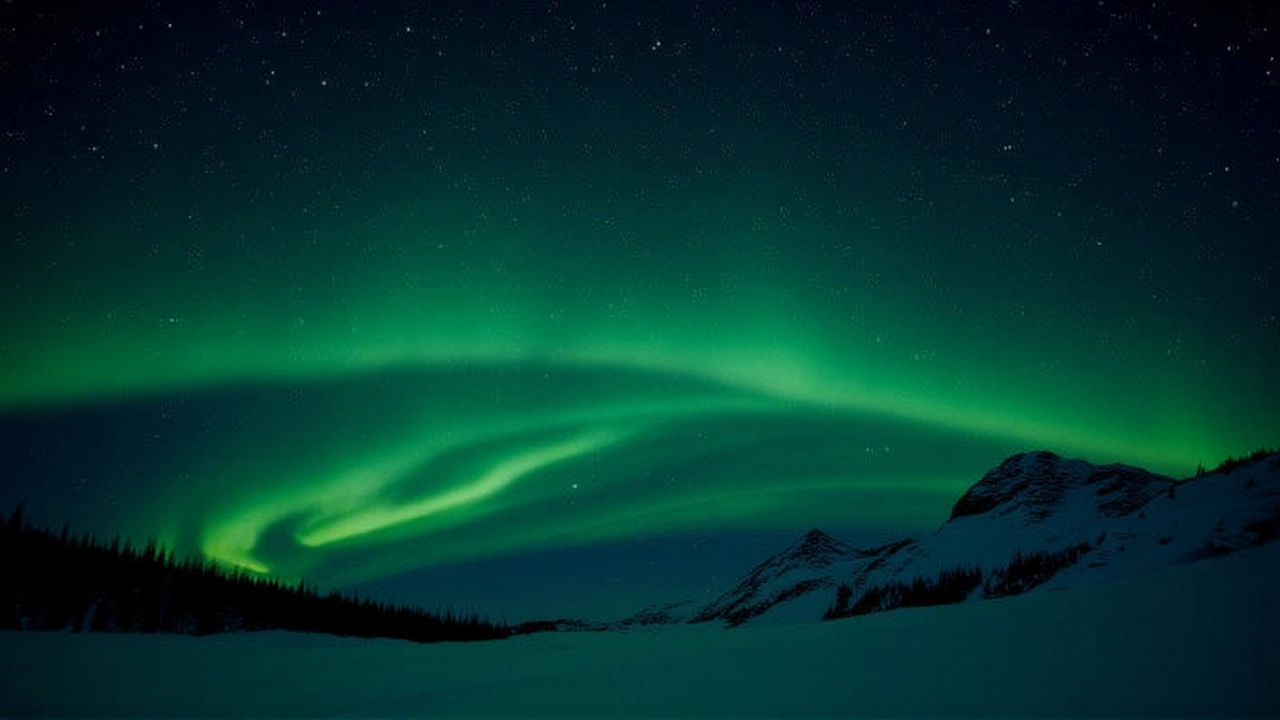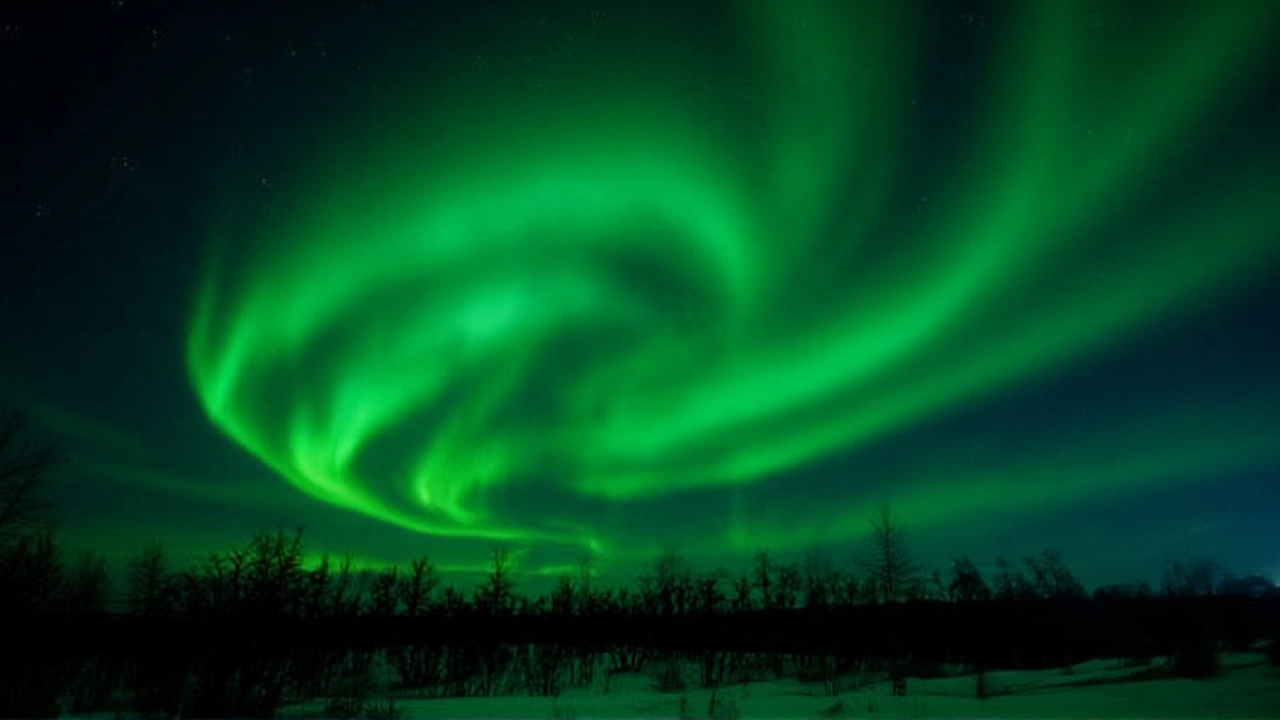Tonight, October 2, 2025, a G2 (moderate) geomagnetic storm is set to push the aurora borealis far enough south that viewers from Alaska to New York could catch a glimpse of the dancing lights. The forecast comes from NOAA's Space Weather Prediction Center, which predicts a Kp index peaking at 6.67, a level that typically lights up the northern tier of the United States. If you’re parked under a dark sky after sunset, you might just see the night sky turn green‑ish, violet, or even pink for a few fleeting minutes. The display could be the last major aurora show from this solar‑storm episode before the solar wind eases off on Friday.
What’s Driving Tonight’s Aurora?
The chain‑reaction began on August 30 when a long‑duration M2.7 solar flare erupted from sunspot AR 4199. The flare launched a fast coronal mass ejection (CME) that, by September 1 at about 5:00 p.m. EDT, slammed into Earth’s magnetosphere. Scientists call the resulting disturbance a “cannibal solar storm” because the fast CME overtook and absorbed a slower‑moving one, amplifying the magnetic punch.
U.K. Met Office analysts echo NOAA’s outlook, noting the solar wind speed is expected to taper off after midnight, which will gradually calm the geomagnetic turbulence.
States in the Aurora Viewing Zone
Based on NOAA’s latest aurora‑oval forecast, twelve states sit at least partially within or right beside the projected view line. Here’s the lineup, ordered west‑to‑east:
- Alaska (including Utqiaġvik, Bethel, Dillingham)
- Washington
- Montana
- North Dakota
- Minnesota
- Wisconsin
- Michigan
- New Hampshire
- Vermont (potential if storm strengthens to G3)
- Massachusetts
- Connecticut
- New York
If the storm escalates to a G3 (strong) level—something seen earlier this week—auroras could push even farther south, teasing parts of northern Pennsylvania, Iowa, and Oregon’s southern half. Weather permitting, those extra‑southern eyes might still catch the faintest green glows near the horizon.
How to Maximize Your Viewing Experience
The classic recipe stays the same: dark skies, a north‑facing vista, and a clear horizon. For most locations, the sweet spot lands between midnight and 2:00 a.m. local time, although the aurora can start flickering as soon as the sky goes dark after sunset.
Practical tips:
- Drive at least 30 minutes away from city lights. Even a small town can drown out the subtle purple hues.
- Dress warmly—temperatures in the northern states can plunge below 0 °F (‑18 °C) by midnight.
- Bring a red‑light flashlight to preserve night‑vision while scanning the sky.
- Use a smartphone or tablet with a live‑aurora‑forecast app. My Aurora Forecast & Alerts (iOS/Android) and Space Weather Live both pull NOAA’s data in real time.
Remember, auroras often appear in waves, starting faint before brightening. Patience pays off; many observers report the most vivid displays after a half‑hour of waiting.
Expert Forecasts and Apps
“The Kp‑6.5 range is strong enough to push the auroral oval well into the upper Midwest and New England,” said a senior forecaster at NOAA Space Weather Prediction Center. “If the storm maintains its momentum, we could see a sustained green band arching across the sky in parts of New York and Massachusetts.”
The University of Alaska's Geophysical Institute continues to monitor real‑time imagery from its all‑sky cameras. Their live feed shows bright arcs already rippling over Fairbanks, and they expect similar activity to mirror in the lower‑48 states tonight.
What Comes After Tonight?
Both NOAA and the U.K. Met Office forecast a rapid decline in geomagnetic activity after midnight UTC on October 3. Expect a return to G1 (minor) storm levels, which typically keep auroras confined to the Arctic Circle.
That said, occasional sub‑storms can still pop up, delivering brief, localized displays as late as the early morning of October 4. Enthusiasts who missed tonight’s show should keep an eye on the Kp forecast; a sudden spike above 5 can resurrect the aurora in the northern tier for another night.
Historical Context of Cannibal Solar Storms
The “cannibal” moniker isn’t new. Back in March 1989, a fast CME overtook a slower predecessor, producing the infamous Quebec blackout and spectacular auroras as far south as Texas. Scientists study those events because the merged CMEs generate stronger magnetic fields, which, in turn, drive higher Kp values.
Research from the National Center for Atmospheric Research shows that such compound storms occur roughly once every 2–3 years during the solar cycle’s peak. We’re currently in Solar Cycle 25, which peaked in July 2025, so the odds of another cannibal storm later this year remain elevated.

Frequently Asked Questions
How likely is it that I’ll see the aurora from New York?
If the sky stays clear and you step far enough from city lights—think upstate or Long Island—you have a decent chance. The forecast puts the Kp at 6.5, which can push the auroral oval into the lower Hudson Valley after midnight.
What exactly is a "cannibal solar storm"?
It’s when a faster‑moving coronal mass ejection catches up to and merges with a slower one released earlier. The merger amplifies the magnetic field in the combined cloud, leading to a stronger impact on Earth’s magnetosphere.
Which apps give the most reliable aurora forecasts?
"My Aurora Forecast & Alerts" pulls real‑time Kp data from NOAA and offers location‑specific alerts. "Space Weather Live" provides detailed solar wind parameters and a visual aurora‑oval map. Both are free and update automatically.
What other states could see auroras if the storm strengthens?
A jump to G3 would likely bring faint green arcs into northern Pennsylvania, southern Iowa, and the northern half of Oregon. Those regions would need exceptionally dark skies to catch anything noticeable.
Will the aurora affect any technology or power grids tonight?
A G2 storm can cause minor fluctuations in satellite communications and GPS accuracy, but it’s unlikely to trigger major power‑grid disruptions. Utilities monitor the Kp index and have protocols in place for any sudden spikes.
- Poplular Tags
- aurora
- NOAA
- geomagnetic storm
- United States
- space weather











